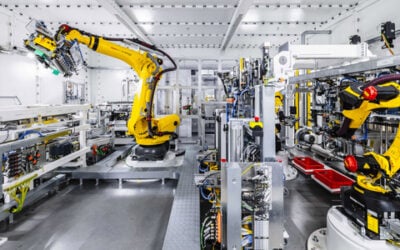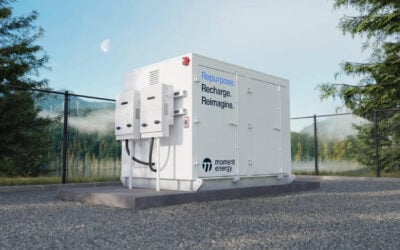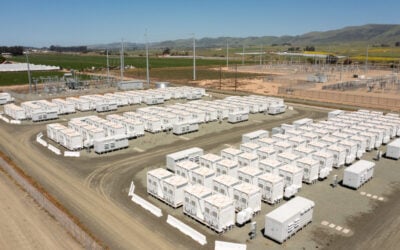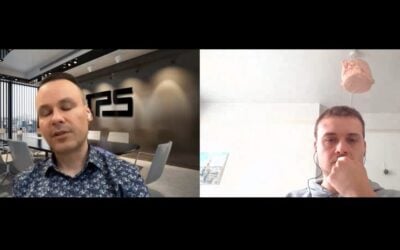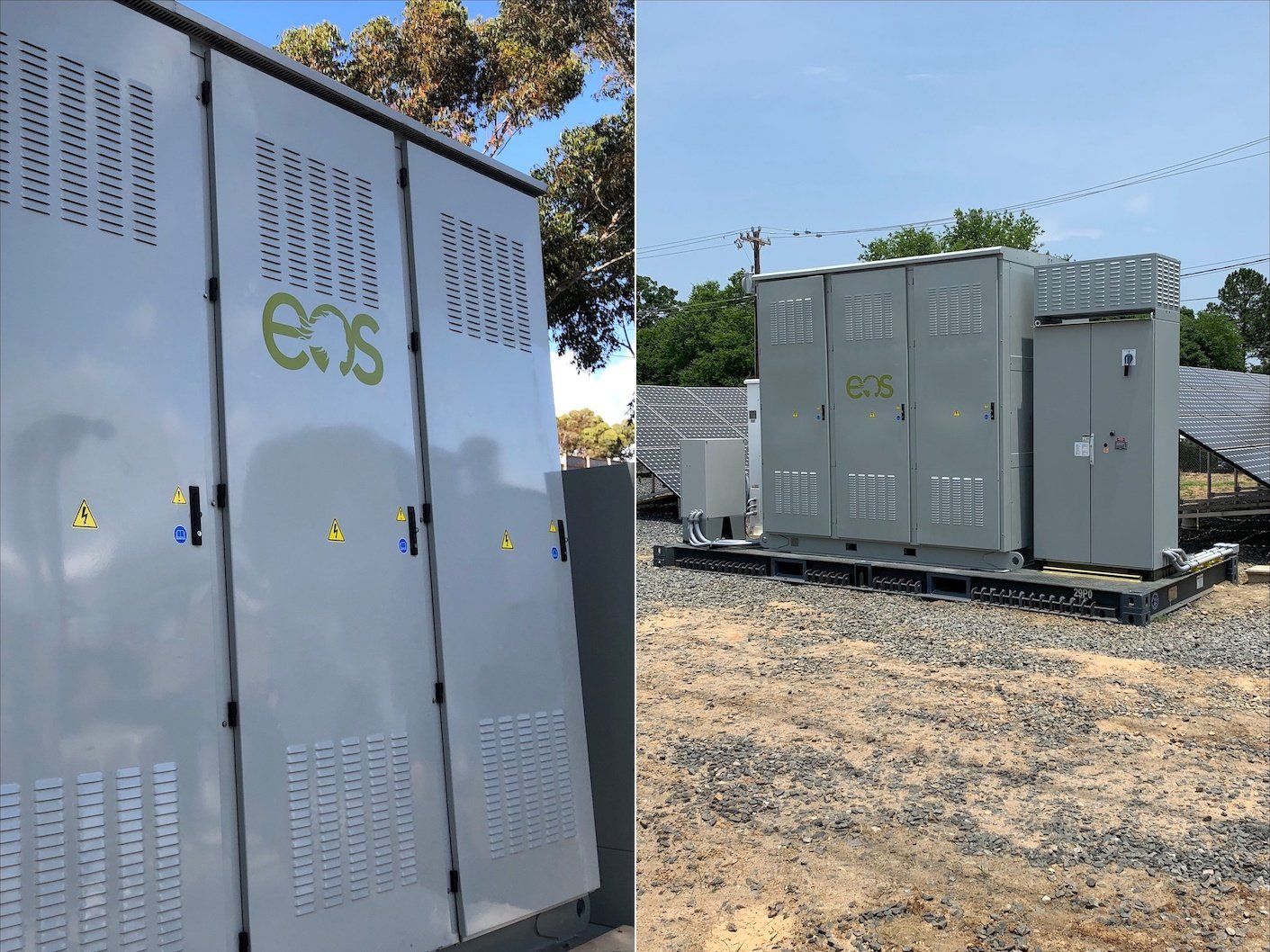
Long-duration zinc battery energy storage system maker Eos Energy Enterprises’ order book, backlog and sales pipelines have greatly increased, but the company has also incurred significant costs as it puts in efforts to reach scale in manufacturing and deployments.
Founded in 2008, Eos Energy Enterprises listed on the NASDAQ exchange last November following a merger with a special purpose acquisition company (SPAC). Its second-ever quarterly results release as a publicly-listed company was released earlier this week, showing that US$33 million of orders, representing 141MWh of systems, have been booked in the year-to-date. This leaves it with an order backlog of about US$50.5 million.
Enjoy 12 months of exclusive analysis
- Regular insight and analysis of the industry’s biggest developments
- In-depth interviews with the industry’s leading figures
- Annual digital subscription to the PV Tech Power journal
- Discounts on Solar Media’s portfolio of events, in-person and virtual
Those booked orders are spread across nine projects for eight different customers: 104MWh of those (around US$18.5 million) are cash sales of equipment for delivery in 2021 and 2022 and the remaining 37MWh are for asset leasing, worth US$8.2 million for delivery during this year. The company also included in its booked order figures US$6.3 million worth of monitoring and maintenance obligations, which are contracted over five to 18 years and usually start in the third year after commissioning — once the two-year limited warranty period expires.
Talking up the future potential of the systems and technology in an earnings call with investors, CEO Joe Mastrangelo said that the company’s commercial pipeline is US$3.9 billion, or 23GWh of orders. This included US$3.3 billion of active proposals versus firm commitments of US$0.6 billion; active proposals have increased by nearly half a billion dollars since Q4 2020.
Mastrangelo said that the pipeline only includes customers or projects “with a clear mandate on project requirements, technical specifications and only a use case that satisfies Eos specifications,” and that generally, around 30% of the pipeline has translated into booked orders, based on the company’s previous experience.
Eos had about US$101 million in cash balance as of the end of March, which the company claims is in line with its expectations. The company is targeting US$50 million revenues for the full year 2021, which means it needs to build rapidly on the US$164,000 of revenues it achieved in Q1, based on the successful delivery of equipment to a large microgrid project in Nigeria. It is also aiming to reach booked orders worth US$300 million by the end of the year to meet 2022 commitments.
Other projects already underway include an order for large-scale energy storage system (ESS) technology for US developer Hecate Energy for a project in Texas, which CEO Mastrangelo said provides locational capacity in the Texas ERCOT market and is a “great project” for Eos. The shipment of the first of four containers was made to a project at a Greek oil refinery which the CEO said is expected to be online in the early summer.
“We’re on track to get to the US$50 million in revenue. We’re going to be commissioning tank containers and we’re going to be shipping US$10 million of sales in the next five months,” Mastrangelo said.
Progress, scale-up, bankability and differentiation cost money
Along with the sales and order targets, Eos Energy Enterprises also wants to achieve key milestones that will allow it to gain further market share in the long-duration, non-lithium battery storage space as it gradually takes off.
These include expanding its manufacturing to 800MWh capacity, launching its third generation system technology, called Z3, and the achievement of full testing for standards UL1973 and UL 9540A. Eos also wants to expand further into global markets, including the establishment of a sales team in Europe.
Eos spent about US$5 million on R&D activities in Q1 2021. A significant portion of that, around US$2.2 million according to the company, related to UL testing and certification. Considered vital by many in the industry to make battery and ESS technology bankable, Eos received its UL9540A report in March following completion of testing.
UL9540A tests equipment for safety for thermal runaway and the risk of fire and explosion. Joe Mastrangelo said the Eos aqueous zinc battery is “inherently fireproof, in that it will not catch on fire or explode and does not need ancillary systems like HVAC cooling systems or software to manage the risk of thermal runaway”. This is something the company sees as a competitive advantage.
In more detail, the CEO explained that over discharge tests show no degradation in the battery (“no loss of performance or capacity”), the nail test — where a nail is fired into the battery — was “relatively boring” because no fire or explosion event occurred and over charging the battery caused the temperature to rise, some electrolyte to leak and some steam to be released, which the company had expected. Finally the short circuit test caused the battery temperature to rise to about 80°C, unlike a lithium-ion battery which could rise to about 700 or 800°C under the same test. For the broader system safety standard UL1973, the company expects its draft report to be returned later this month.
There was also a high cost incurred by general and administrative expenses, about US$16.7 million. Nearly half of this (US$7.8 million) was associated with Eos’ buy-out of its manufacturing joint venture (JV) with nuclear equipment and services company Holtec.
Turning into a public company also inevitably cost money: it paid about US$2.9 million in professional fees relating to the SPAC merger and listing, mainly US$2.5 million of higher stock compensation expenses and US$1 million of non-recurring expenses.
The company’s supply chain is steady and its equipment is based largely on earth-abundant raw materials, Mastrangelo and chief financial officer Sagar Kurada said in response to questions from analyst Subash Chandra from Northland Securities. It is also building out optionality in its supply chain to mitigate future risk on the key materials it uses, such as titanium.
Chandra asked when the company expects to see positive gross margins. Kurada said that it will not happen this year, but in the fourth quarter of 2022 “is when we expect to see gross margin be positive” on a quarter-to-quarter basis, which the CFO and his CEO both reiterated was in line with guidance offered previously by the company.
From 2023, CFO Kurada said, Eos will “expect the run rate of gross margin to continue to yield positive results”.
Earnings call transcript by Seeking Alpha.

